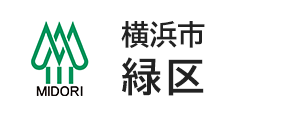- Yokohama-shi Top Page
- Midori Ward Top Page
- Introduction of the ward
- Overview of Midori Ward
- Origin of place name
The text is from here.
Origin of place name
Last updated on January 11, 2019.
The text of "Midori Ward Ward Name and Ayumi" was reprinted in December 1996 by the City of Yokohama, Civic Affairs Bureau General Affairs Department Housing Indication Division (currently the Civic Affairs Bureau Service Division). It has been more than 10 years since the issuance, and there are some parts that do not fit the current situation, but due to copyright, the text is the one at the time of publication. The current situation and explanations of words and phrases will be described after the text of each item. Thank you for your understanding.
Midori Ward, which was reorganized on October 1, 1969, was reorganized into the Kohoku Ward area. However, with the reorganization of administrative districts on November 6, 1994, some areas became Aoba Ward and Tsuzuki Ward . The name of the ward was decided by the public, with the desire to preserve the greenery beautifully by selecting the Midori Ward, Kita Ward, Kawawa Ward, Tsuzuki Ward and Aoba Ward. Located in the northwestern part of Yokohama City, it has a long and narrow terrain east-west along the Tsurumi River and its tributary, Onda River. The forest area in the Sanbo and Shinji districts near the center of Midori Ward is the largest in Yokohama. The ratio of greenery and farmland in forests and parks to the area of Midori Ward (green coverage) is about 52 percent, ranking first among the 18 wards. In the Edo period, the Oyama Kaido, Nakahara Kaido, and Hachioji Kaido were connected, but the entire area was an agricultural area. The Yokohama Railway (currently the Yokohama Line) was opened in 1908, and the Tokyu Denentoshi Line was opened in 1966. Since the 1930s, land readjustment projects and public housing complex development have been active, and residential areas have spread around four stations on the Yokohama Line, and urbanization has progressed. Midori Ward's goal is to create a town that is blessed with rich nature and can live and gather lively. In addition, we are promoting the “Green and Water Corridor Concept” that connects bases that make use of natural resources such as greenery and water in the city with corridors. The names of Midori Ward are often derived from old historical names such as Kitahassakucho, Nishihassakucho and Tokaichibacho. In addition, due to the enforcement of the land readjustment project, newly established towns are named towns with "hills" and "mountains" like Kirigaoka and Takeyama, and towns related to plants such as Ibukino. In the town of Midori Ward, the largest area is Nagatsuda-cho (4.305 square kilometers), and the smallest area is Takeyama Sanchome (0.094 square kilometers).
※Current green coverage: 44. 3% (fiscal 2004)
※New catchphrase: Everyone's Midori Ward ※Current area: The largest, Nagatsuda-cho (3.41 square kilometers) / narrowest, Takeyama 3-chome (0.094 square kilometers) As of the 2005 Census
※Alphabetical order
Western part
- Ibukino
- 1-chome to 7-chome Nagatsuda
- Nagatsuta-cho
- Nagatsutaminamidai
Inquiries to this page
Midori Ward General Affairs Department Ward Administration Promotion Division
Phone: 045-930-2220
Phone: 045-930-2220
Fax: 045-930-2225
E-Mail address [email protected]
Page ID: 123-820-310












